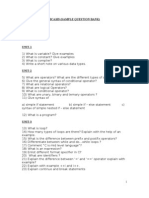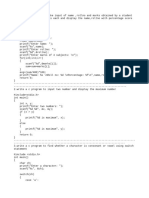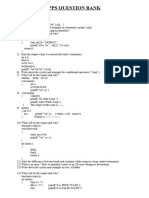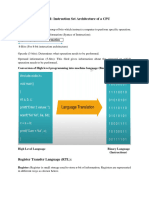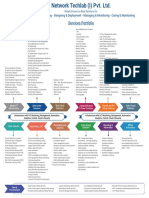0% found this document useful (0 votes)
32 views25 pagesProgramming in C Important Questions
The document outlines important questions and concepts related to programming in C, covering topics such as algorithms, data types, control statements, arrays, recursion, dynamic memory allocation, structures, unions, file handling, pointers, and macros. It includes examples and explanations for each concept, providing a comprehensive overview for learners. Additionally, it addresses specific programming tasks like checking for palindromes, merging strings, and reading employee details using structures.
Uploaded by
sarshad81323Copyright
© © All Rights Reserved
We take content rights seriously. If you suspect this is your content, claim it here.
Available Formats
Download as PDF, TXT or read online on Scribd
0% found this document useful (0 votes)
32 views25 pagesProgramming in C Important Questions
The document outlines important questions and concepts related to programming in C, covering topics such as algorithms, data types, control statements, arrays, recursion, dynamic memory allocation, structures, unions, file handling, pointers, and macros. It includes examples and explanations for each concept, providing a comprehensive overview for learners. Additionally, it addresses specific programming tasks like checking for palindromes, merging strings, and reading employee details using structures.
Uploaded by
sarshad81323Copyright
© © All Rights Reserved
We take content rights seriously. If you suspect this is your content, claim it here.
Available Formats
Download as PDF, TXT or read online on Scribd
/ 25











































